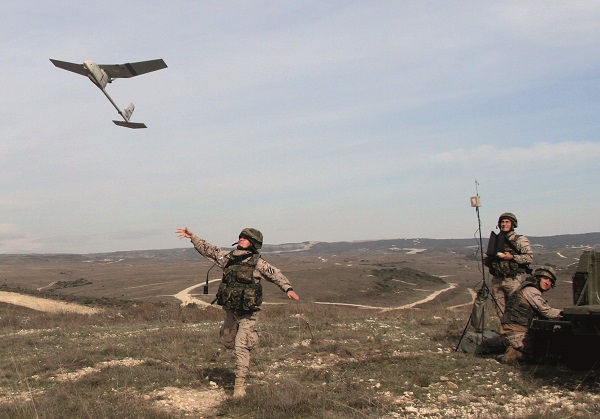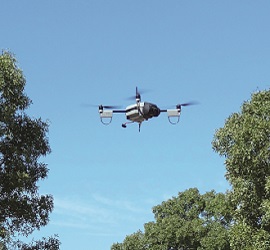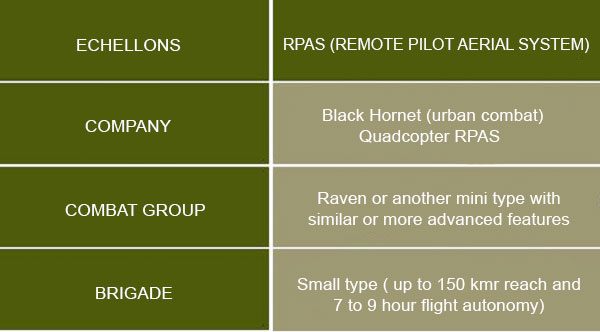- Home
- Feature Articles
- El imperio de la inteligencia
Rule of intelligence
Wednesday, January 23, 2019
Number: 74
The proliferation of new and advanced ISR (Intelligence, Surveillance and Reconnaissance) systems, exploitation methods and analysis processes, technological revolution of RPAS, as well as the delegation of their use to the lowest echelons of the operational structures (combat subgroup, combat and brigade group) have lead to an increase in the efficiency in military actions.
So much so that, for instance, nowadays it is common that the chiefs of small units such as sections or companies are capable of accessing the image of different targets and transmitting their real-time position themselves.


On the other hand, information technologies and the drones used in recent conflicts such as Iraq, Afghanistan or Syria have allowed the deployed forces to have advantage in the decision-making cycle compared to the adaptation capacity and innovation showed by terrorist networks. However, success in the dismantling of such units was not achieved until a conceptual innovation took place in the way of making a proper use and integration of the new technologies in the intelligence and decision-making processes. For this reason, when designing a 20135 Brigade, one of the greatest challenges is to create a concept of intelligence capable of making the most of the latest technologies at the time. The new Brigade will increase its ISTAR (Intelligence, Surveillance, Target Acquisition and Reconnaissance) means in several echelons, specially regarding RPAS means. It is being examined that each company has some models of these sytems, with different reach and autonomy, and capacity to obtain the necessary intelligence in its direct fire bubble—established by the maximum reach of its direct fire weapons, 30 mm cannon and Spike missile system. Company-level RPAS will be micro, such as Black Hornet (very useful in urban combat) and a second one, quadcopter type, yet to be determined. For combat groups, RPAS will be mini, such as the current Raven, which is already digital, or another one with similar or more advanced features. The information provided by this kind of systems is enough to provide intellience coverage to the indirect fire bubble, determined by the efficient reach of the combat group mortars. Combat groups in brigades will have a digital Raven model in the coming years. The system will cover the intelligence needs in an indirect fire bubble. At a brigade level, the remote-piloted system is small type, up to 150 km reach and 7 to 9 hour flight autonomy.
In conclusion, it will all lead to a dramatic increase in the means at brigade level in a way that, if all the systems were in the air at the same time, around 30 systems in support of the different echelons would be operating.
The exponential increase of ISTAR systems will generate an enorous amount of data, images, and video, revolutionising processes and flows of intelligence. The direct intervention of the human being in some of these processes could lead to losing the advantage they provide, interfering in its adequate exploitation and slowing down the 'speed' of war in execution and the cycle of decision. For this reason, the use of the machine to choose and beat targets will be more useful in many of the processes. So, in the short term, it is foreseeable that most part of the processes and flows of information will be automatised with second generation artificial intelligence technologies. In the medium and long term, the solution will be to automatise them with fourth generation artificial intelligence.

ARMY UNITS
- Araba Álava |
- Albacete |
- Alicante |
- Almería |
- Asturias |
- Ávila |
- Badajoz |
- Barcelona |
- Burgos |
- Cáceres |
- Cádiz |
- Cantabria |
- Castellón |
- Ceuta |
- Ciudad Real |
- Córdoba |
- A Coruña |
- Cuenca |
- Girona |
- Granada |
- Guadalajara |
- Gipuzkoa |
- Huelva |
- Huesca |
- Islas Baleares |
- Jaén |
- León |
- Lleida |
- Lugo |
- Madrid |
- Málaga |
- Melilla |
- Murcia |
- Navarra |
- Ourense |
- Palencia |
- Las Palmas |
- Pontevedra |
- La Rioja |
- Salamanca |
- Segovia |
- Sevilla |
- Soria |
- Tarragona |
- Santa Cruz de Tenerife |
- Teruel |
- Toledo |
- Valencia |
- Valladolid |
- Bizkaia |
- Zamora |
- Zaragoza



